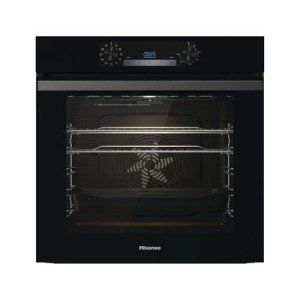The Rise of Built-in Ovens: Enhancing Modern Kitchens
In the ever-evolving world of home improvement, built-in ovens have become a staple in modern kitchen style. These appliances not just provide a smooth and smooth visual however also contribute significantly to the performance and efficiency of home cooking. This article delves into the various elements of built-in ovens, including their benefits, types, setup considerations, and maintenance, together with often asked concerns to offer a comprehensive summary.
What is a Built-in Oven?
A built-in oven is an appliance developed to be set up into kitchen cabinetry, offering it a structured look and maximizing counter space. Unlike standard freestanding ovens, which stand alone and are frequently bulky, built-in ovens fit flush with cabinets for a more integrated look. They are readily available in numerous sizes, designs, and functions, accommodating a wide variety of culinary requirements and kitchen styles.
Advantages of Built-in Ovens
Built-in ovens included various advantages that make them appealing to house owners. Below are a few of the crucial benefits:
- Space Efficiency: Built-in ovens save counter space while optimizing kitchen designs.
- Personalized Design: They can be integrated into kitchen cabinetry, permitting homeowners to customize aesthetics according to individual taste.
- Enhanced Performance: Many built-in ovens come geared up with sophisticated cooking innovations, allowing for better heat distribution and faster cooking times.
- Availability: Their installation at eye level makes it much easier to examine food without flexing down, supplying greater convenience and safety.
- Resale Value: A modern, properly designed kitchen can improve home worth, making built-in ovens an investment worth considering.
Types of Built-in Ovens
Built-in ovens can be classified based upon their design and function. The following list details the typical types of built-in ovens readily available on the market:
- Single Ovens: A standard model that features one cooking compartment.
- Double Ovens: These included two separate compartments, which enable cooking multiple dishes at different temperatures.
- Wall Ovens: Installed into the wall for a space-saving option, these ovens provide benefit and availability and can be either single or double.
- Steam Ovens: These use steam for wet cooking and are often favored for much healthier meal preparation.
- Convection Ovens: Designed with a fan that flows hot air, making sure even cooking and browning.
| Type | Description | Suitable For |
|---|---|---|
| Single Oven | One cooking compartment for standard baking and roasting. | Little households and kitchen areas. |
| Double Oven | 2 compartments for simultaneous cooking of different dishes. | Large families with varied menus. |
| Wall Oven | Built into the wall for simple gain access to. | Space-conscious kitchen areas. |
| Steam Oven | Cooks using steam for much healthier options. | Health-conscious individuals. |
| Stove | Circulates hot air for even cooking and quicker results. | Baking lovers and chefs. |
Setup Considerations
Picking to set up a built-in oven includes a number of factors to consider to guarantee that it fits flawlessly within the kitchen. Crucial aspects include:
- Cabinet Dimensions: Accurate measurement of the cabinet space needed for the oven is crucial for a proper fit.
- Power Supply: Built-in ovens normally need a devoted power supply; speaking with a licensed electrical expert might be required.
- Ventilation: Ensure that the oven's ventilation requirements are fulfilled to promote safe operation.
- Local Building Codes: Compliance with local codes is necessary when installing any kitchen device.
It's highly suggested that installation be performed by experts to make sure security and adherence to producer requirements.
Upkeep of Built-in Ovens
Maintaining built-in ovens is necessary to guarantee their durability and operation. Below are some tips for reliable upkeep:
- Regular Cleaning: Wipe down surfaces after each usage to avoid accumulation; think about self-cleaning options if readily available.
- Check Seals: Inspect the oven door seals routinely for wear and tear to maintain efficiency and prevent heat loss.
- Adjust Temperature: Occasionally check and adjust oven temperature level settings if cooking outcomes are irregular.
- Expert Servicing: Schedule regular upkeep with certified service technicians for electrical elements and much deeper cleaning.
Often Asked Questions (FAQs)
Q1: How do I select the ideal size built-in oven for my kitchen?
A1: Measure the offered cabinet area and think about the cooking practices of your household. Single or double ovens are common options based on meal preparation requirements.
Q2: Are built-in ovens more energy-efficient than freestanding ones?
A2: Built-in ovens can be more energy-efficient due to better insulation and advanced cooking technology; however, real effectiveness depends upon the particular design and use.
Q3: Can built-in ovens be installed throughout the kitchen?
A3: Built-in ovens require specific cabinets and may require a devoted power source, so planning their placement thoroughly within the kitchen design is vital.
Q4: What kind of upkeep do built-in ovens need?
A4: Regular cleansing, inspecting door seals, calibrating temperatures, and expert servicing as needed are all components of correct maintenance.
Built-in ovens are an impressive addition to modern cooking areas, offering both visual and useful advantages. built in double oven and hob packages -saving design, personalized choices, and advanced features accommodate diverse cooking needs. When thinking about a built-in oven, property owners need to take into consideration their particular culinary preferences, kitchen design, and maintenance abilities. By doing so, they would be making a valuable investment in their home, increasing both performance and design.

